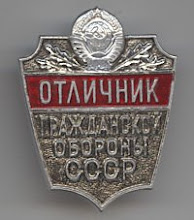Russia's plans for the expansion of nuclear power are ambitions. The plan announced at the end of July calls for essentially doubling the size of Russia's reactor fleet by 2020. But are these plans even remotely realistic? After all, ambitious construction programs laid out for the industry in previous decades have gone almost totally unfulfilled. Does Russia have the capability to build dozens of reactors in the next decade?
The bulk of Russia's nuclear plant construction in the coming years will consist of the AES-2006, a modernized version of the VVER pressurized-water reactors built during the Soviet period. The major components for these plants were built in three facilities, all of which currently exist in some capacity:
1. The Izhorskie Zavody, in Kolipino. These plants manufactured the vast majority of pressurized-water reactor components in the Soviet period. From naval reactors to VVER-1000s, the Izhorskie Zavody is still the center of Russian reactor manufacture. Estimates of its theoretical capacity to produce pressure vessels vary considerably, from a single unit a year to approximately four. The latter seems like an overestimate, and in the past few years production has averaged less than two sets of reactor equipment a year. Rosatom is making sizable investments in the facility to raise this to three sets a year by 2011, and four sets a year a few years after this. Due to long lead times and the fact that the plants produce a wide array of equipment for other industries, it is unclear how great production will be in the next few years.
2. Skoda Power, in the Czech Republic. The division of Skoda that produced reactor equipment under socialism was acquired by the same company that owns the Izhorskie Zavody several years ago. Historically, this plant produced 21 VVER-440s and 3 VVER-1000s prior to the collapse of Communism. Today it still produces parts and equipment for existing VVERs and is exploring the prospect of beginning production of components for new reactors.
3. Atommash. As its name suggests, this plant was founded to produce nuclear power equipment for the Soviet electrical sector. One of the most ambitious industrial investments of the Brezhnev years, Atommash was planned to produce eight complete VVER-1000s a year in an assembly-line fashion. This would enable the USSR to fulfill its plans to produce 60% of its electricity from nuclear power by the year 2000. As one might imagine, the scale of this factory is absolutely colossal. Unfortunately, the plant never managed to produce reactor equipment at anything like the projected rate. To date, Atommash has only ever produced three sets of equipment for VVERs. This was the result of a myriad of problems, including labor difficulties and architectural oversights that allowed the pressure vessel foundry to settle and caused one wall of it to collapse. However, Atommash has enjoyed a quite successful second life producing heavy equipment--albeit mainly for the burgeoning Russian petroleum and natural gas industries. Today it is owned by Energomash, and as such is not responsible to Minatom in the sense that the previous two factories are. At times Atommash seems to have been written off as a supplier of pressure vessels, but occasional mention of the plant by figures in the Russian nuclear industry suggest that the prospect of procuring AES-2006 components from the facility is still under consideration.
Can these facilities produce all the components needed for Minatom's nuclear construction program? Within Russia, there are naysayers. They believe that between the unavailability of Atommash and the failure of the Izhorskie Zavody to build even two VVER-1000s a year so far as a sign that Minatom cannot build anywhere near as many new plants as it plans to. On the other hand, Putin's promise of over $40 billion dollars in state investment in the nuclear industry through 2015 should work to bolster the prospects of the Russian nuclear revival. Some of this money is bound to be used to increase the production capacity of the Izhorskie Zavody. But ultimately, only time will tell whether Russian industry is up to the challenge of the nuclear renaissance.
Friday, August 29, 2008
Subscribe to:
Post Comments (Atom)

No comments:
Post a Comment